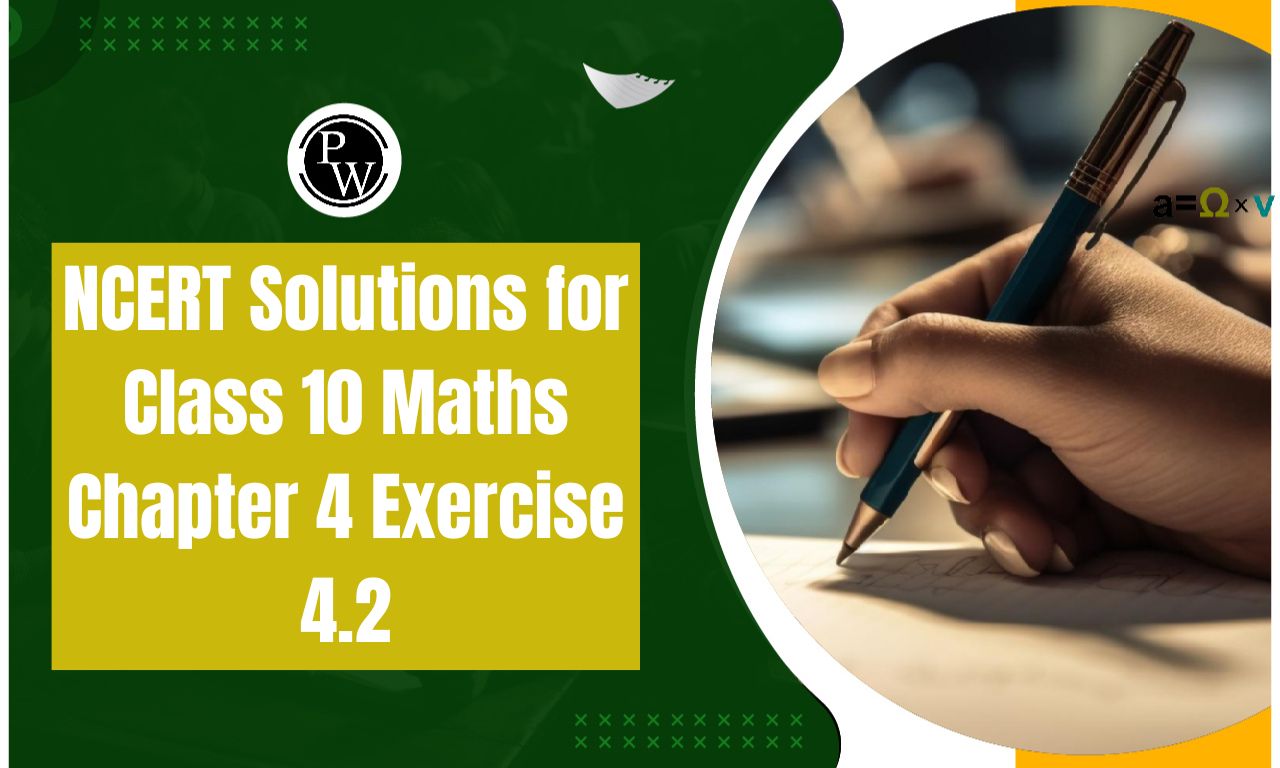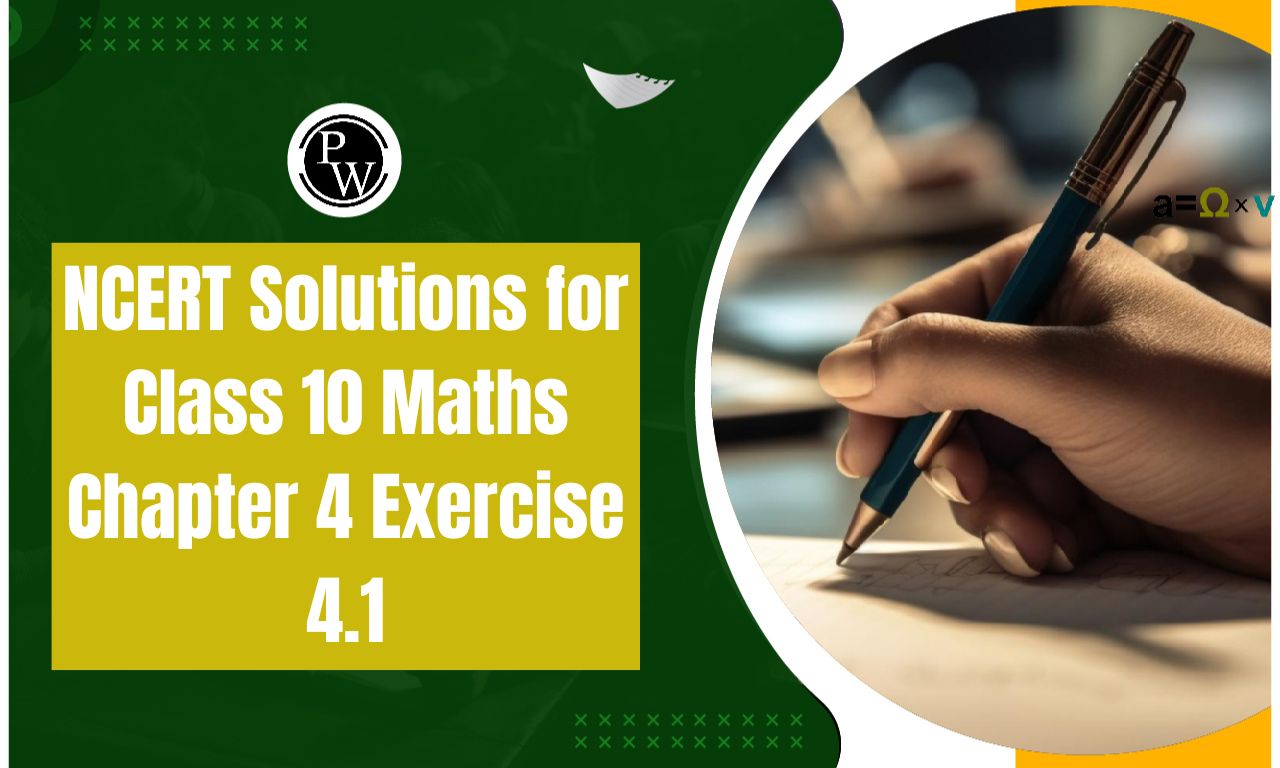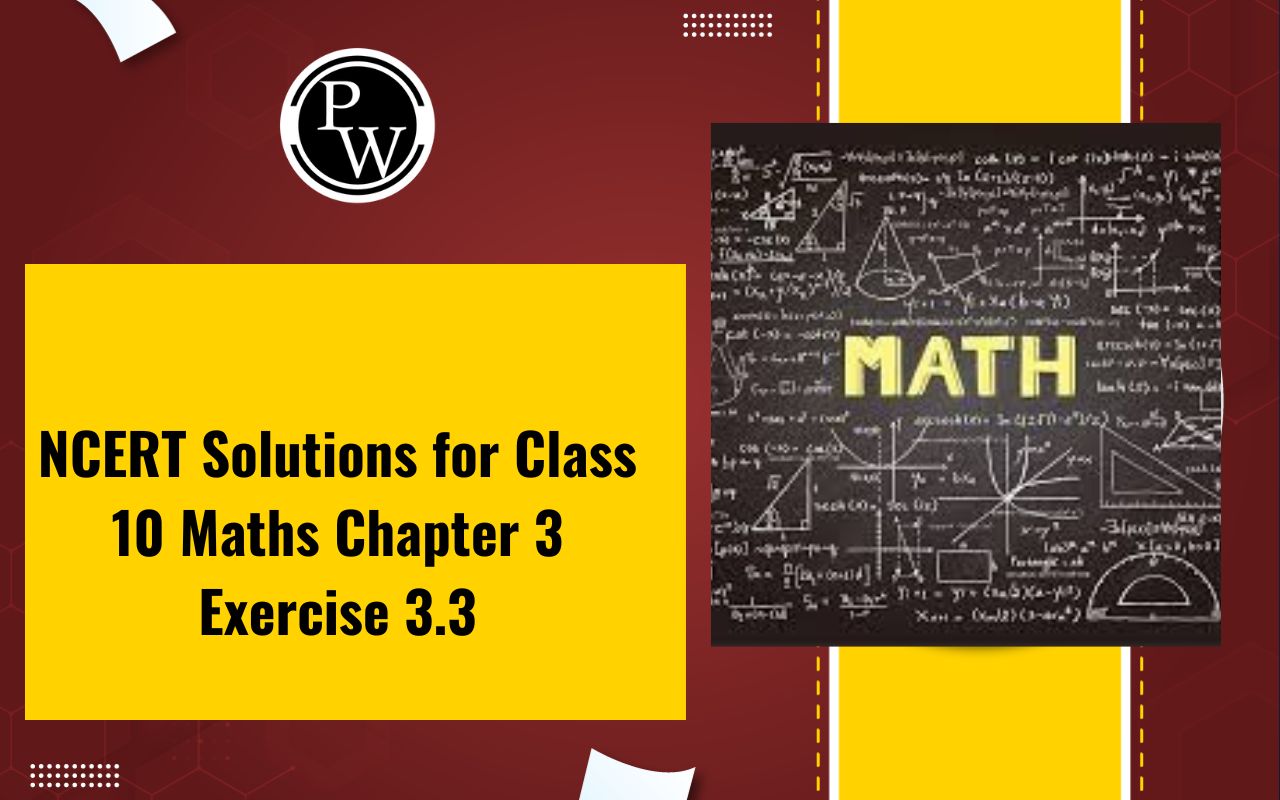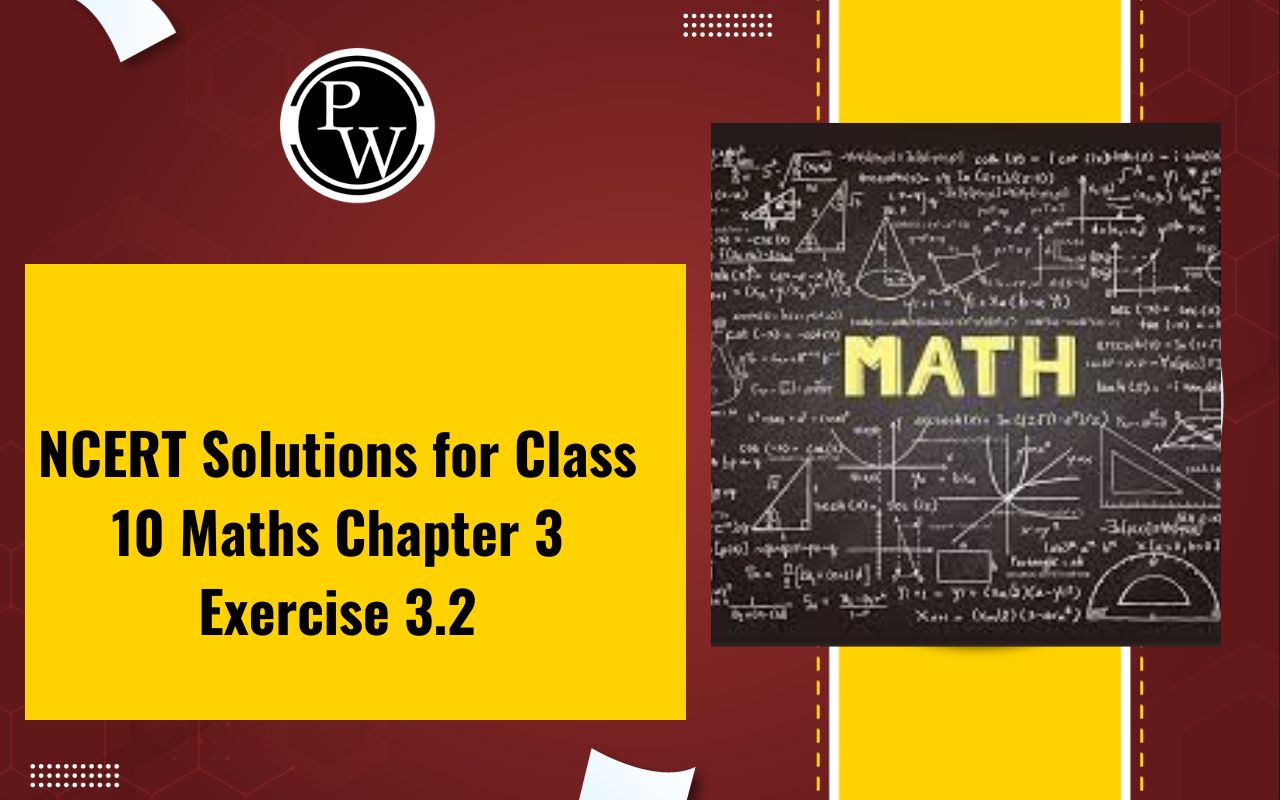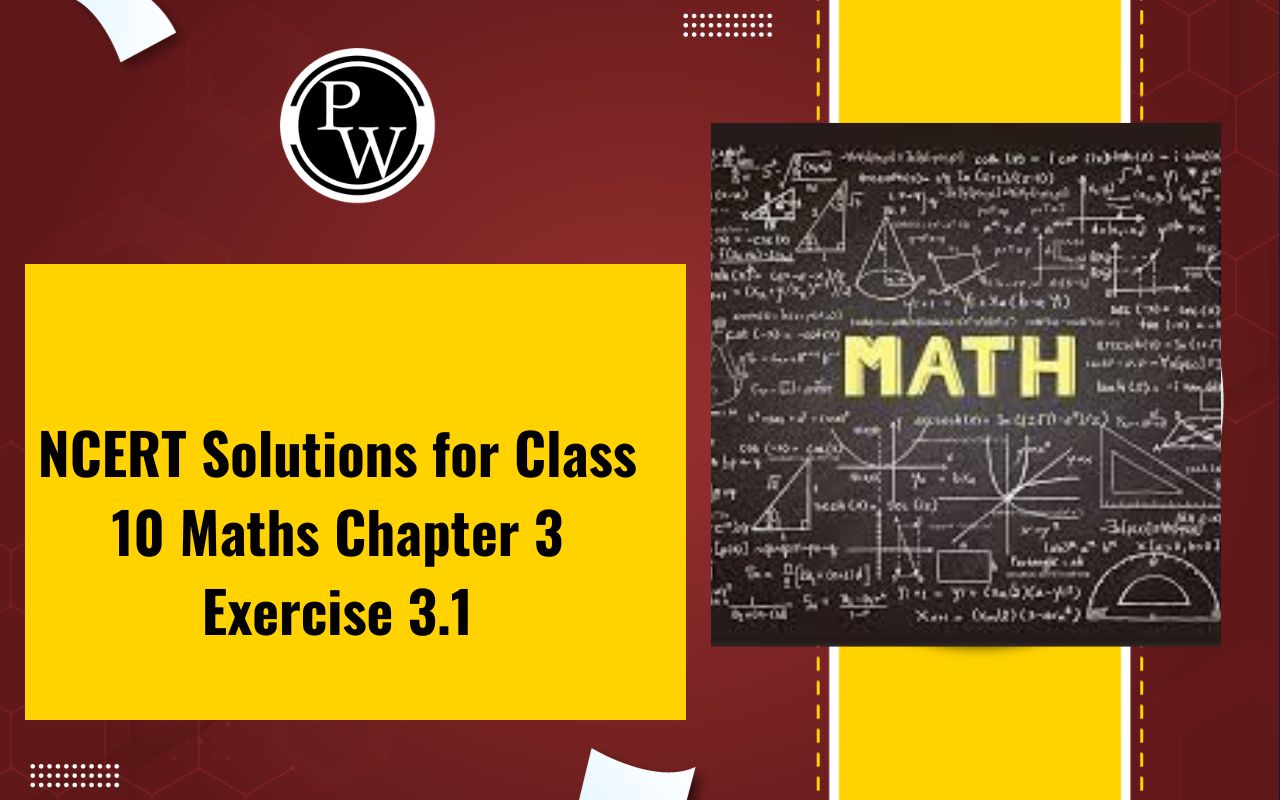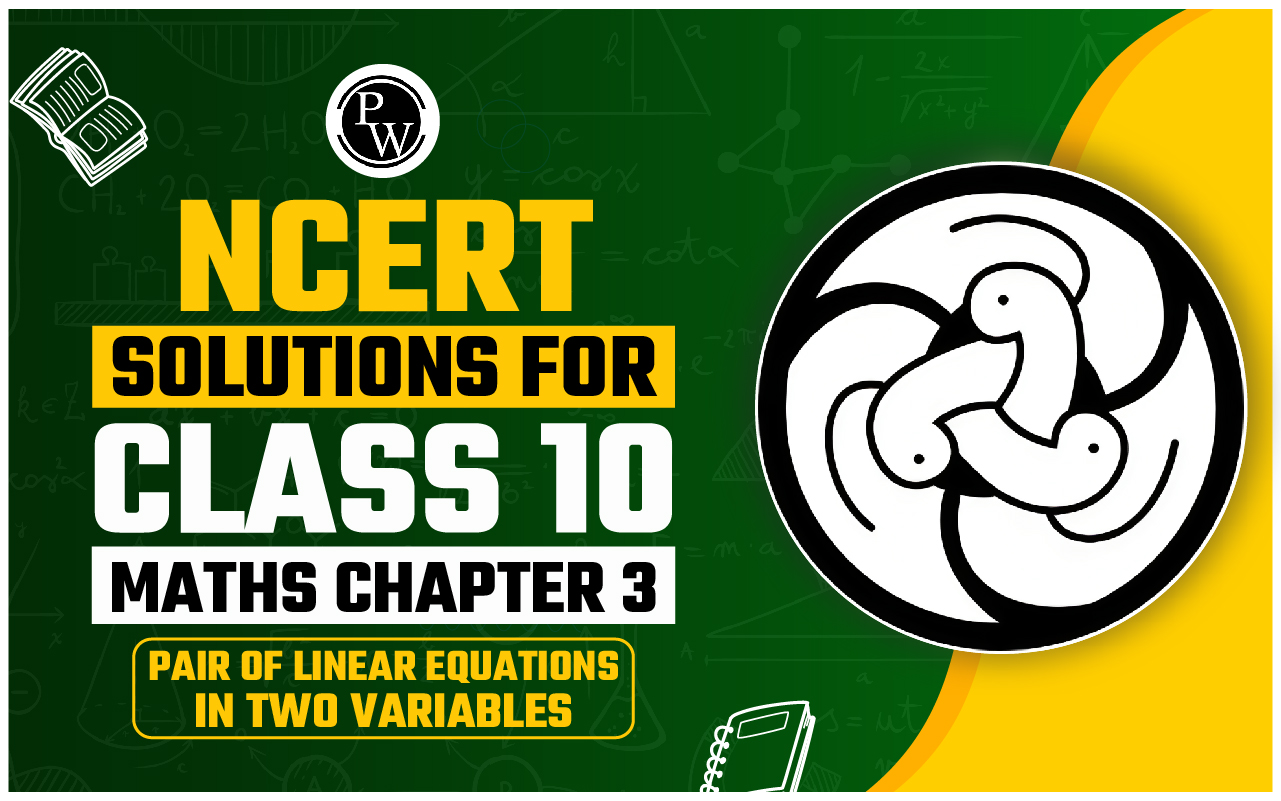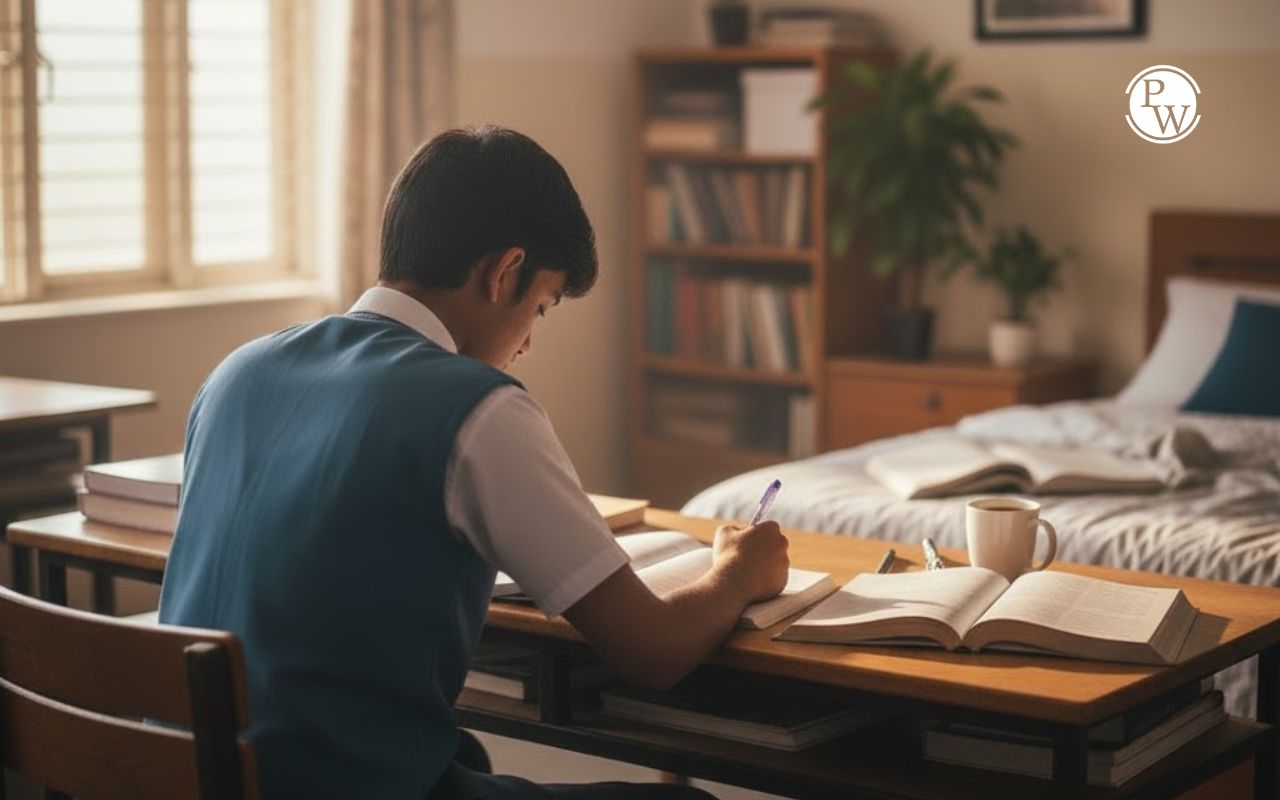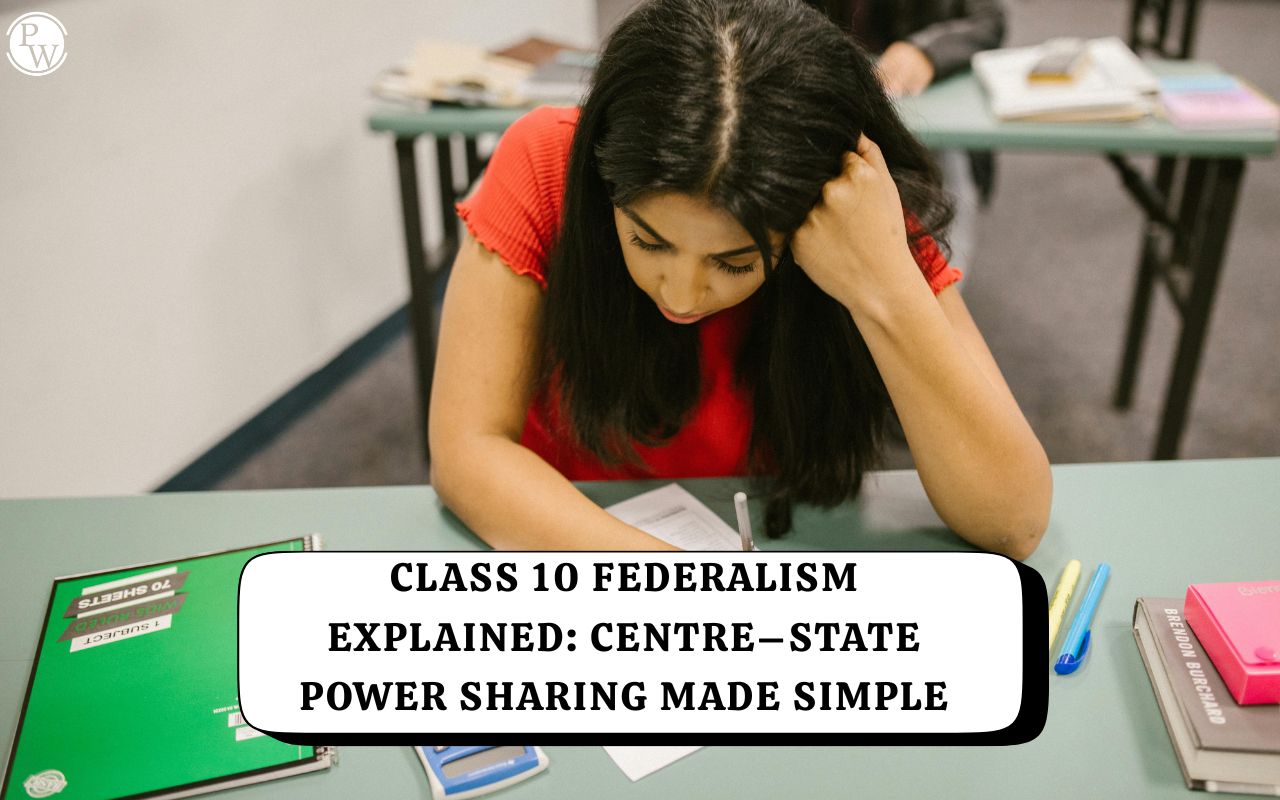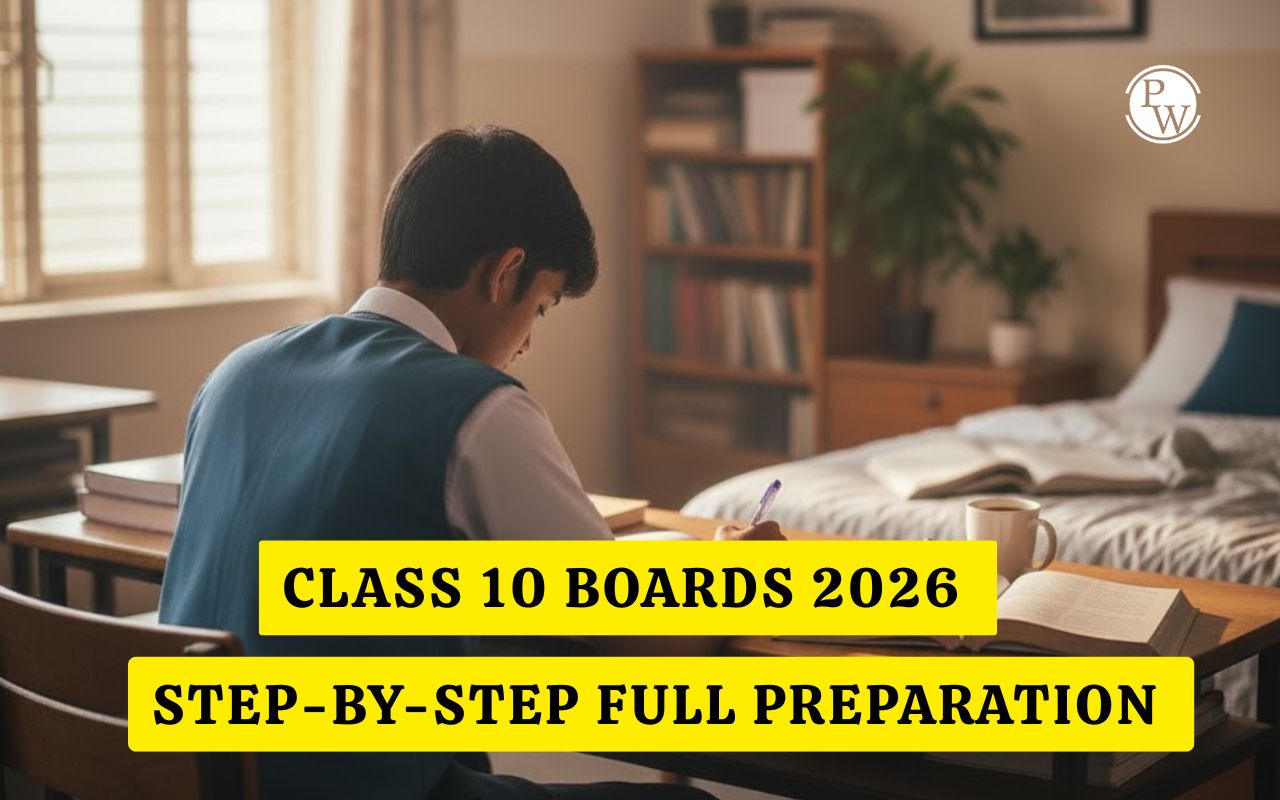
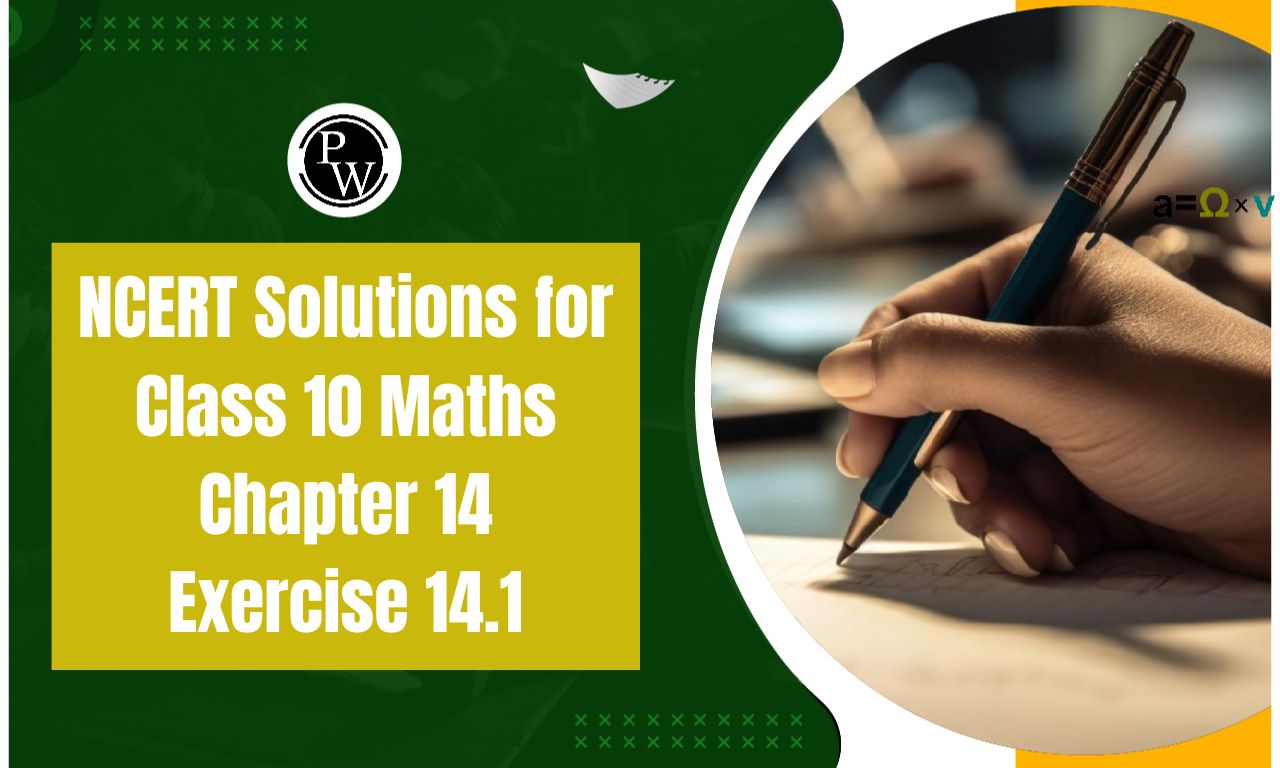
NCERT Solutions for Class 10 Maths Chapter 14 Exercise 14.1: NCERT Solutions for Class 10 Maths Chapter 14 Exercise 14.1 provide a comprehensive introduction to Probability, focusing on finding the likelihood of events. This exercise emphasizes practical understanding through simple problems, such as calculating probabilities of outcomes from random experiments like coin tosses, dice rolls, or card draws.
Key concepts include the formula for probability. It helps students relate theoretical probability to real-world scenarios. These solutions are detailed, easy to grasp, and aligned with the NCERT syllabus, aiding in conceptual clarity and preparation for exams. CBSE Class 10 Maths Sample Paper 2024-25NCERT Solutions for Class 10 Maths Chapter 14 Exercise 14.1 Overview
NCERT Solutions for Class 10 Maths Chapter 14 Exercise 14.1 PDF
NCERT Solutions for Class 10 Maths Chapter 14 Exercise 14.1 focus on the fundamental concept of Probability , helping students grasp its applications in random experiments like coin tosses, dice rolls, and more. These solutions simplify problem-solving with clear explanations, enhancing preparation and confidence for exams. Below, we have provided a downloadable PDF of the solutions, offering easy access to step-by-step guidance for mastering this important chapter.NCERT Solutions for Class 10 Maths Chapter 14 Exercise 14.1 PDF
NCERT Solutions for Class 10 Maths Chapter 14 Exercise 14.1 Probability
Below is the NCERT Solutions for Class 10 Maths Chapter 14 Exercise 14.1 Probability -1. Complete the following statements:
(i) Probability of an event E + Probability of the event ‘not E’ = ___________.
(ii) The probability of an event that cannot happen is __________. Such an event is called ________.
(iii) The probability of an event that is certain to happen is _________. Such an event is called _________.
(iv) The sum of the probabilities of all the elementary events of an experiment is __________.
(v) The probability of an event is greater than or equal to ___ and less than or equal to __________.
Solution:
(i) Probability of an event E + Probability of the event ‘not E’ = 1 . (ii) The probability of an event that cannot happen is 0 . Such an event is called an impossible event . (iii) The probability of an event that is certain to happen is 1 . Such an event is called a sure or certain event . (iv) The sum of the probabilities of all the elementary events of an experiment is 1 . (v) The probability of an event is greater than or equal to 0 and less than or equal to 1 .2. Which of the following experiments have equally likely outcomes? Explain.
(i) A driver attempts to start a car. The car starts or does not start.
(ii) A player attempts to shoot a basketball. She/he shoots or misses the shot.
(iii) A trial is made to a solution: a true-false question. The solution is right or wrong.
(iv) A baby is born. It is a boy or a girl.
Solution:
(i) This statement does not have equally likely outcomes as the car may or may not start depending upon various factors like fuel, etc. (ii) This statement does not have equally likely outcomes as the player may shoot or miss the shot. (iii) This statement has equally likely outcomes as it is known that the solution is either right or wrong. (iv) This statement also has equally likely outcomes as it is known that the newly born baby can either be a boy or a girl.3. Why is tossing a coin considered to be a fair way of deciding which team should get the ball at the beginning of a football game?
Solution:
The tossing of a coin is a fair way of deciding because the number of possible outcomes is only 2, i.e. either head or tail. Since these two outcomes are equally likely outcomes, tossing is unpredictable and is considered to be completely unbiased.4. Which of the following cannot be the probability of an event?
(A) 2/3, (B) -1.5, (C) 15%, (D) 0.7
Solution:
The probability of any event (E) always lies between 0 and 1, i.e. 0 ≤ P(E) ≤ 1. So, from the above options, option (B) -1.5 cannot be the probability of an event.5. If P(E) = 0.05, what is the probability of ‘not E’?
Solution:
We know that, P(E)+P(not E) = 1 It is given that, P(E) = 0.05 So, P(not E) = 1-P(E) Or, P(not E) = 1-0.05 ∴ P(not E) = 0.956. A bag contains lemon-flavoured candies only. Malini takes out one candy without looking into the bag. What is the probability that she will take out
(i) an orange-flavoured candy?
(ii) a lemon-flavoured candy?
Solution:
(i) We know that the bag only contains lemon-flavoured candies. So, The number of orange-flavoured candies = 0 ∴ The probability of taking out orange-flavoured candies = 0/1 = 0 (ii) As there are only lemon-flavoured candies, P(lemon-flavoured candies) = 1 (or 100%)7. It is given that in a group of 3 students, the probability of 2 students not having the same birthday is 0.992. What is the probability that the 2 students have the same birthday?
Solution:
Let the event wherein 2 students having the same birthday be E Given, P(E) = 0.992 We know, P(E)+P(not E) = 1 Or, P(not E) = 1–0.992 = 0.008 ∴ The probability that the 2 students have the same birthday is 0.0088. A bag contains 3 red balls and 5 black balls. A ball is drawn at random from the bag. What is the probability that the ball drawn is
(i) red?
(ii) not red?
Solution:
The total number of balls = No. of red balls + No. of black balls So, the total number of balls = 5+3 = 8 We know that the probability of an event is the ratio between the number of favourable outcomes and the total number of outcomes. P(E) = (Number of favourable outcomes/Total number of outcomes) (i) Probability of drawing red balls = P (red balls) = (no. of red balls/total no. of balls) = 3/8 (ii) Probability of drawing black balls = P (black balls) = (no. of black balls/total no. of balls) = 5/89. A box contains 5 red marbles, 8 white marbles and 4 green marbles. One marble is taken out of the box at random. What is the probability that the marble taken out will be
(i) red?
(ii) white?
(iii) not green?
Solution:
The Total no. of balls = 5+8+4 = 17 P(E) = (Number of favourable outcomes/ Total number of outcomes) (i) Total number of red balls = 5 P (red ball) = 5/17 = 0.29 (ii) Total number of white balls = 8 P (white ball) = 8/17 = 0.47 (iii) Total number of green balls = 4 P (green ball) = 4/17 = 0.23 ∴ P (not green) = 1-P(green ball) = 1-(4/7) = 0.7710. A piggy bank contains hundred 50p coins, fifty ₹1 coins, twenty ₹2 coins and ten ₹5 coins. If it is equally likely that one of the coins will fall out when the bank is turned upside down, what is the probability that the coin
(i) will be a 50 p coin?
(ii) will not be a ₹5 coin?
Solution:
Total no. of coins = 100+50+20+10 = 180 P(E) = (Number of favourable outcomes/ Total number of outcomes)(i) Total number of 50 p coin = 100
P (50 p coin) = 100/180 = 5/9 = 0.55(ii) Total number of ₹5 coin = 10
P (₹5 coin) = 10/180 = 1/18 = 0.055 ∴ P (not ₹5 coin) = 1-P (₹5 coin) = 1-0.055 = 0.94511. Gopi buys a fish from a shop for his aquarium. The shopkeeper takes out one fish at random from a tank containing 5 male fish and 8 female fish (see Fig. 15.4). What is the probability that the fish taken out is a male fish?

Solution:
The total number of fish in the tank = 5+8 = 13 Total number of male fish = 5 P(E) = (Number of favourable outcomes/Total number of outcomes) P (male fish) = 5/13 = 0.3812. A game of chance consists of spinning an arrow which comes to rest, pointing at one of the numbers 1, 2, 3, 4, 5, 6, 7, 8 (see Fig. 15.5), and these are equally likely outcomes. What is the probability that it will point at
(i) 8?
(ii) an odd number?
(iii) a number greater than 2?
(iv) a number less than 9?

Solution:
Total number of possible outcomes = 8 P(E) = (Number of favourable outcomes/ Total number of outcomes) (i) Total number of favourable events (i.e. 8) = 1 ∴ P (pointing at 8) = ⅛ = 0.125 (ii) Total number of odd numbers = 4 (1, 3, 5 and 7) P (pointing at an odd number) = 4/8 = ½ = 0.5 (iii) Total numbers greater than 2 = 6 (3, 4, 5, 6, 7 and 8) P (pointing at a number greater than 4) = 6/8 = ¾ = 0.75 (iv) Total numbers less than 9 = 8 (1, 2, 3, 4, 5, 6, 7, and 8) P (pointing at a number less than 9) = 8/8 = 113. A die is thrown once. Find the probability of getting
(i) a prime number
(ii) a number lying between 2 and 6
(iii) an odd number
Solution:
Total possible events when a dice is thrown = 6 (1, 2, 3, 4, 5, and 6) P(E) = (Number of favourable outcomes/ Total number of outcomes)(i) Total number of prime numbers = 3 (2, 3 and 5)
P (getting a prime number) = 3/6 = ½ = 0.5(ii) Total numbers lying between 2 and 6 = 3 (3, 4 and 5)
P (getting a number between 2 and 6) = 3/6 = ½ = 0.5(iii) Total number of odd numbers = 3 (1, 3 and 5)
P (getting an odd number) = 3/6 = ½ = 0.514. One card is drawn from a well-shuffled deck of 52 cards. Find the probability of getting
(i) a king of red colour
(ii) a face card
(iii) a red face card
(iv) the jack of hearts
(v) a spade
(vi) the queen of diamonds
Solution:
Total number of possible outcomes = 52 P(E) = (Number of favourable outcomes/ Total number of outcomes)(i) Total number of the king of red colour = 2
P (getting a king of red colour) = 2/52 = 1/26 = 0.038(ii) Total number of face cards = 12
P (getting a face card) = 12/52 = 3/13 = 0.23(iii) Total number of red face cards = 6
P (getting a king of red colour) = 6/52 = 3/26 = 0.11(iv) Total number of jack of hearts = 1
P (getting a king of red colour) = 1/52 = 0.019(v) Total numbers of the king of spade = 13
P (getting a king of red colour) = 13/52 = ¼ = 0.25(vi) Total number of the queen of diamonds = 1
P (getting a king of red colour) = 1/52 = 0.01915. Five cards, the ten, jack, queen, king and ace of diamonds, are well-shuffled with their face downwards. One card is then picked up at random.
(i) What is the probability that the card is the queen?
(ii) If the queen is drawn and put aside, what is the probability that the second card picked up is (a) an ace? (b) a queen?
Solution:
Total number of cards = 5 P(E) = (Number of favourable outcomes/Total number of outcomes)(i) Number of queens = 1
P (picking a queen) = ⅕ = 0.2(ii) If the queen is drawn and put aside, the total number of cards left is (5-4) = 4
(a) Total numbers of ace = 1 P (picking an ace) = ¼ = 0.25 (b) Total number of queens = 0 P (picking a queen) = 0/4 = 016. 12 defective pens are accidentally mixed with 132 good ones. It is not possible to just look at a pen and tell whether or not it is defective. One pen is taken out at random from this lot. Determine the probability that the pen taken out is a good one.
Solution:
Numbers of pens = Numbers of defective pens + Numbers of good pens ∴ Total number of pens = 132+12 = 144 pens P(E) = (Number of favourable outcomes/Total number of outcomes) P(picking a good pen) = 132/144 = 11/12 = 0.91617. (i) A lot of 20 bulbs contain 4 defective ones. One bulb is drawn at random from the lot. What is the probability that this bulb is defective?
(ii) Suppose the bulb drawn in (i) is not defective and is not replaced. Now one bulb is drawn at random from the rest. What is the probability that this bulb is not defective?
Solution:
(i) Number of defective bulbs = 4
The total number of bulbs = 20 P(E) = (Number of favourable outcomes/ Total number of outcomes) ∴ Probability of getting a defective bulb = P (defective bulb) = 4/20 = ⅕ = 0.2(ii) Since 1 non-defective bulb is drawn, then the total number of bulbs left is 19
So, the total number of events (or outcomes) = 19 Number of non-defective bulbs = 19-4 = 15 So, the probability that the bulb is not defective = 15/19 = 0.78918. A box contains 90 discs which are numbered from 1 to 90. If one disc is drawn at random from the box, find the probability that it bears
(i) a two-digit number
(ii) a perfect square number
(iii) a number divisible by 5
Solution:
The total number of discs = 90 P(E) = (Number of favourable outcomes/ Total number of outcomes)(i) Total number of discs having two digit numbers = 81
(Since 1 to 9 are single-digit numbers and so, total 2-digit numbers are 90-9 = 81) P (bearing a two-digit number) = 81/90 = 9/10 = 0.9(ii) Total number of perfect square numbers = 9 (1, 4, 9, 16, 25, 36, 49, 64 and 81)
P (getting a perfect square number) = 9/90 = 1/10 = 0.1(iii) Total numbers which are divisible by 5 = 18 (5, 10, 15, 20, 25, 30, 35, 40, 45, 50, 55, 60, 65, 70, 75, 80, 85 and 90)
P (getting a number divisible by 5) = 18/90 = ⅕ = 0.219. A child has a die whose six faces show the letters as given below:

The die is thrown once. What is the probability of getting
(i) A?
(ii) D?
Solution:
The total number of possible outcomes (or events) = 6 P(E) = (Number of favourable outcomes/Total number of outcomes)(i) The total number of faces having A on it = 2
P (getting A) = 2/6 = ⅓ = 0.33(ii) The total number of faces having D on it = 1
P (getting D) = ⅙ = 0.16620. Suppose you drop a die at random on the rectangular region shown in Fig. 15.6. What is the probability that it will land inside the circle with a diameter 1m?

Solution:
First, calculate the area of the rectangle and the area of the circle. Here, the area of the rectangle is the possible outcome, and the area of the circle will be the favourable outcome. So, the area of the rectangle = (3×2) m 2 = 6 m 2 and, The area of the circle = πr 2 = π(½) 2 m 2 = π/4 m 2 = 0.78 ∴ The probability that die will land inside the circle = [(π/4)/6] = π/24 or, 0.78/6 = 0.1321. A lot consists of 144 ball pens, of which 20 are defective, and the others are good. Nuri will buy a pen if it is good, but will not buy it if it is defective. The shopkeeper draws one pen at random and gives it to her. What is the probability that
(i) She will buy it?
(ii) She will not buy it?
Solution:
The total number of outcomes, i.e. pens = 144 Given, the number of defective pens = 20 ∴ The numbers of non defective pens = 144-20 = 124 P(E) = (Number of favourable outcomes/Total number of outcomes) (i) Total number of events in which she will buy them = 124 So, P (buying) = 124/144 = 31/36 = 0.86 (ii) Total number of events in which she will not buy them = 20 So, P (not buying) = 20/144 = 5/36 = 0.138(ii) A student argues that ‘there are 11 possible outcomes 2, 3, 4, 5, 6, 7, 8, 9, 10, 11 and 12. Therefore, each of them has a probability of 1/11. Do you agree with this argument? Justify your Solution:
Solution:
If 2 dice are thrown, the possible events are: (1, 1), (1, 2), (1, 3), (1, 4), (1, 5), (1, 6) (2, 1), (2, 2), (2, 3), (2, 4), (2, 5), (2, 6) (3, 1), (3, 2), (3, 3), (3, 4), (3, 5), (3, 6) (4, 1), (4, 2), (4, 3), (4, 4), (4, 5), (4, 6) (5, 1), (5, 2), (5, 3), (5, 4), (5, 5), (5, 6) (6, 1), (6, 2), (6, 3), (6, 4), (6, 5), (6, 6) So, the total number of events: 6×6 = 36(i) It is given that to get the sum as 2, the probability is 1/36 as the only possible outcomes = (1,1)
For getting the sum as 3, the possible events (or outcomes) = E (sum 3) = (1,2) and (2,1) So, P(sum 3) = 2/36 Similarly, E (sum 4) = (1,3), (3,1), and (2,2) So, P (sum 4) = 3/36 E (sum 5) = (1,4), (4,1), (2,3), and (3,2) So, P (sum 5) = 4/36 E (sum 6) = (1,5), (5,1), (2,4), (4,2), and (3,3) So, P (sum 6) = 5/36 E (sum 7) = (1,6), (6,1), (5,2), (2,5), (4,3), and (3,4) So, P (sum 7) = 6/36 E (sum 8) = (2,6), (6,2), (3,5), (5,3), and (4,4) So, P (sum 8) = 5/36 E (sum 9) = (3,6), (6,3), (4,5), and (5,4) So, P (sum 9) = 4/36 E (sum 10) = (4,6), (6,4), and (5,5) So, P (sum 10) = 3/36 E (sum 11) = (5,6), and (6,5) So, P (sum 11) = 2/36 E (sum 12) = (6,6) So, P (sum 12) = 1/36 So, the table will be as:| Event: Sum on 2 dice | 2 | 3 | 4 | 5 | 6 | 7 | 8 | 9 | 10 | 11 | 12 |
| Probability | 1/36 | 2/36 | 3/36 | 4/36 | 5/36 | 6/36 | 5/36 | 4/36 | 3/36 | 2/36 | 1/36 |
(ii) The argument is not correct as it is already justified in (i) that the number of all possible outcomes is 36 and not 11.
23. A game consists of tossing a one-rupee coin 3 times and noting its outcome each time. Hanif wins if all the tosses give the same result, i.e. three heads or three tails, and loses otherwise. Calculate the probability that Hanif will lose the game.
Solution:
The total number of outcomes = 8 (HHH, HHT, HTH, THH, TTH, HTT, THT, TTT) Total outcomes in which Hanif will lose the game = 6 (HHT, HTH, THH, TTH, HTT, THT) P (losing the game) = 6/8 = ¾ = 0.7524. A die is thrown twice. What is the probability that
(i) 5 will not come up either time?
(ii) 5 will come up at least once?
[Hint: Throwing a die twice and throwing two dice simultaneously are treated as the same experiment]
Solution:
Outcomes are: (1, 1), (1, 2), (1, 3), (1, 4), (1, 5), (1, 6) (2, 1), (2, 2), (2, 3), (2, 4), (2, 5), (2, 6) (3, 1), (3, 2), (3, 3), (3, 4), (3, 5), (3, 6) (4, 1), (4, 2), (4, 3), (4, 4), (4, 5), (4, 6) (5, 1), (5, 2), (5, 3), (5, 4), (5, 5), (5, 6) (6, 1), (6, 2), (6, 3), (6, 4), (6, 5), (6, 6) So, the total number of outcomes = 6×6 = 36 (i) Method 1: Consider the following events. A = 5 comes in the first throw, B = 5 comes in the second throw P(A) = 6/36, P(B) = 6/36 and P(not B) = 5/6 So, P(not A) = 1-(6/36) = 5/6 ∴ The required probability = (5/6)×(5/6) = 25/36Method 2:
Let E be the event in which 5 does not come up either time. So, the favourable outcomes are [36–(5+6)] = 25 ∴ P(E) = 25/36(ii) Number of events when 5 comes at least once = 11(5+6)
∴ The required probability = 11/3625. Which of the following arguments are correct and which are not correct? Give reasons for your solution:
(i) If two coins are tossed simultaneously, there are three possible outcomes – two heads, two tails or one of each. Therefore, for each of these outcomes, the probability is 1/3
(ii) If a die is thrown, there are two possible outcomes – an odd number or an even number. Therefore, the probability of getting an odd number is 1/2
Solution:
(i) All the possible events are (H,H); (H,T); (T,H) and (T,T)
So, P (getting two heads) = ¼ and, P (getting one of each) = 2/4 = ½ ∴ This statement is incorrect.(ii) Since the two outcomes are equally likely, this statement is correct.
Benefits of Using NCERT Solutions for Class 10 Maths Chapter 14 Exercise 14.1
Concept Clarity : Simplifies complex topics like probability of random events, ensuring a strong conceptual understanding.
Step-by-Step Solutions : Offers detailed explanations to help solve problems efficiently.
Exam-Oriented : Aligns perfectly with NCERT guidelines, boosting exam readiness.
Real-Life Application : Relates probability concepts to practical situations for better understanding.
Error Reduction : Helps identify and correct mistakes with well-structured answers.
Time Management : Improves problem-solving speed by practicing structured methods.
Confidence Booster : Enhances confidence by clearing doubts and reinforcing learning.
Convenience : Provides solutions in an easy-to-understand format, often available in PDF for quick access.
NCERT Solutions for Class 10 Maths Chapter 14 Exercise 4.1 FAQs
How is probability used in real life?
What can probability tell us?
What are the basics of probability?
Is probability a formula?

